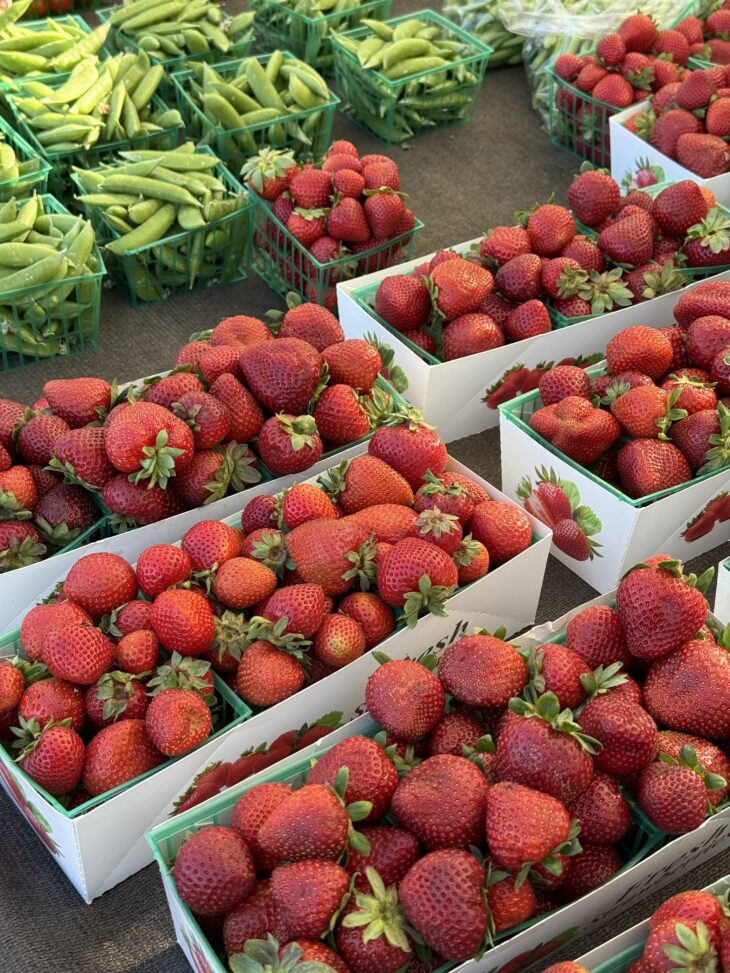5 Easy Ways to Add Fiber to Meals

As the first nutrition post of this blog, it feels important to talk about fiber at a time when protein seems to be taking the spotlight on social media. After looking at the research, statistics show that Americans fall short on fiber far more than protein. Nearly three-quarters of the population doesn’t get enough fiber, but only a small percentage lacks protein!
This statistic alone was enough to convince me to write a short and sweet post about why and how we can consume more fiber in a way that’s easy and enjoyable.
What Exactly Is Fiber?
Fiber is a type of carbohydrate found in plant-based foods – think fruits, veggies, beans, nuts, seeds, and whole grains. Unlike other carbs, our bodies can’t fully digest fiber because we don’t have the enzymes to break it down. Instead, it passes through the digestive system.
There are two main types of fiber:
- Soluble fiber: Absorbs water in the intestine, creating a gel-like texture that slows digestion and helps keep you full. It also helps lower cholesterol and steady blood sugar. Many soluble fibers also feed beneficial gut bacteria (making them prebiotics).
- Insoluble fiber: Does not absorb water. Instead, it adds bulk to stool and helps keep things moving. It basically acts as a broom for the digestive tract.
Most fiber-rich foods contain a mix of both types, which is why variety is key!
Why Fiber Matters
A high-fiber diet is linked to all kinds of health benefits, including:
- Lowering cholesterol and supporting heart health
- Improving blood sugar control
- Preventing constipation and keeping digestion regular
- Fueling good gut bacteria, which release short-chain fatty acids that keep your colon healthy
- Supporting weight management by increasing satiety with minimal calories
- Reducing the risk of colorectal cancer and other chronic diseases
How Much Fiber Do You Need?
The recommended daily intake is:
- Women: 25 grams per day (21 grams if over 50)
- Men: 38 grams per day (30 grams if over 50)
To put this into perspective, only about 5% of Americans are reaching these numbers. On average, we’re getting around 15 grams a day, which means most people would need to almost double their intake. Sounds like a lot, but in reality, there are several tips and tricks you can implement to sneak more fiber into your meals. Here are five ways to start consuming more fiber daily:
1. Start your mornings with fiber
A bowl of oatmeal with berries and chia seeds, whole-grain toast with avocado, or a smoothie with flaxseed are all great options and quick wins. The earlier you can incorporate fiber into your diet, the easier it will be to meet your needs without forcing it later.
- Opt for fiber-rich cereals like oatmeal, sprouted grain bread (like Ezekiel) or 100% whole-wheat bread.
- Eat berries! They are an excellent source of fiber (thanks to those little seeds!). Add them to chia pudding, smoothies, or yogurt.
- Add seeds to oatmeal, yogurt, cereal, or smoothies (chia seeds, ground flaxseeds, and psyllium husk are all great sources of fiber).
2. Incorporate at least three different colored veggies into lunch and/or dinner
This is more of a visual cue, and doesn’t have to be perfect. Adding colorful veggies (raw, roasted, sautéed, whatever you love) not only brings in more fiber, but a variety of micronutrients. Add more color to your plate and you’ll automatically be adding fiber, antioxidants, vitamins, and minerals without overthinking it.
3. Snack smarter
I used to grab whatever was convenient, but I’ve learned that a fiber-rich snack keeps me full longer and prevents me from feeling starving by dinner time. Some favorites include air-popped popcorn, dates with almond butter, and roasted chickpeas. Other options could be:
- Apple (skin on) with almond butter
- Carrots and celery dipped in hummus
- Guacamole with sliced bell peppers, whole-grain crackers, or multigrain tortilla chips
- Roasted chickpeas or edamame, lentil chips or bean crisps
- Trail mix that’s heavy on the almonds
- Yogurt or cottage cheese bowl topped with chia or flax and mixed berries
- Banana with peanut butter
4. Choose whole grains (most of the time)
Replacing refined grains with whole grains like quinoa, farro, brown rice, and whole-wheat pasta is a super easy switch! They’re not only higher in fiber, but also more nutrient-dense (and more flavorful in my opinion).
5. Add beans and lentils to your recipes!
This is probably one of my favorite hacks. Lentils in soup, black beans in tacos, chickpeas in salads, even pureed white beans in pasta sauce. They blend right in and easily up your fiber game.
